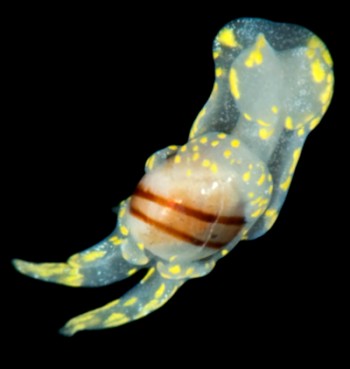
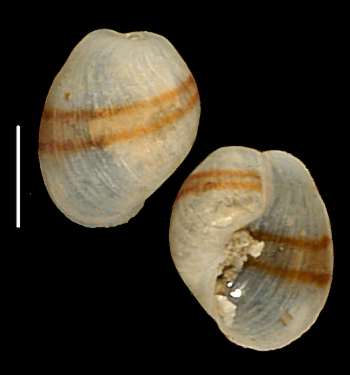
Noalda exigua
(Hedley, 1912)
Order: CEPHALASPIDEA
Family: Aglajidae
DISTRIBUTION
Known from southeastern Australia, with confirmed records from New South Wales and Victoria, and an unconfirmed report from Tasmania.
PHOTO
Upper Photo: Anderson Point, Portland, Victoria, Australia, 23 February 2007. Photo: Leon Altoff .
Lower Photo: Holotype of Hydatina exigua (Australian Museum collection) Scale = 1mm.
The true relationship of this species to other opisthobranchs is somewhat problematic because its anatomy has never been examined. It was originally describe on the basis of an empty shell (Hedley, 1912) and placed in the genus Hydatina [see H. physis], but Iredale (1936) transferred it to a new genus Noalda, with no further evidence than the original shell.
Recent drawings of the living animal (Burn & Thompson, 1998) and Leon Altoff's photos [see message #23262] certainly suggest it is not a hydatinid. Burn & Thompson suggest it is an aglajiid but we really need to examine its anatomy.
The partly enclosed shell, with two brown lines, the bifid 'tail', and bright yellow spots are all characteristic of this species.
I have copied Hedley's and Iredale's descriptions below:
"Shell minute, thin globular, truncate above, rounded below, imperforate. Colour: on a white ground are two narrow peripheral chcolate bands, twice thie breadth apart, connected with a wash of cream and visible internally. Surface smooth. Within the aperture a layer of dull callus is spread on the prededing whorl. Columella deeply, spirally inserted. Apex perforate, spire immersed. Height 1.3 mm breadth 1.5 mm. Middle head, Sydney, 15 may 1902. "
Description of Hydatina exigua Hedley 1912. p. 158-59 Pl XLV fig 46
"This curious little shell which Hedley called Hydatina exigua is obviously not congeneric with the preceding [Hydatina] species and is here distinguished generically with the new name Noalda. It is less than 2mm in length and breadth and the apex is quite different from that of Hydatina, the body whorl being also comparatively smaller, the mouth consequently more open."
Iredale's description of genus Noalda
- Hedley, C. 1912. Descriptions of some new or noteworthy shells. Records of the Australian Museum 8: 131-160.
- Iredale, T. 1936. Australian Molluscan Notes. No.2. Records of the Australian Museum 19: 267-340; pls 20-24.
- Burn, R. & Thompson, T.E. (1998). Order Cephalaspidea. Mollusca: The Southern Synthesis. Fauna of Australia. P. L. Beesley, G. J. B. Ross and A. Wells. Melbourne, CSIRO Publishing. 5, Part B.: 943-959.
- Burn, R., 2006. A checklist and bibliography of the Opisthobranchia (Mollusca: Gastropoda) of Victoria and the Bass Strait area, south-eastern Australia. Museum Victoria Science Reports 10: 1-42.
Rudman, W.B., 2010 (February 19) Noalda exigua (Hedley, 1912). [In] Sea Slug Forum. Australian Museum, Sydney. Available from http://www.seaslugforum.net/find/noalexig
Related messages
Noalda exigua from Portland, Victoria
February 19, 2010
From: Leon Altoff
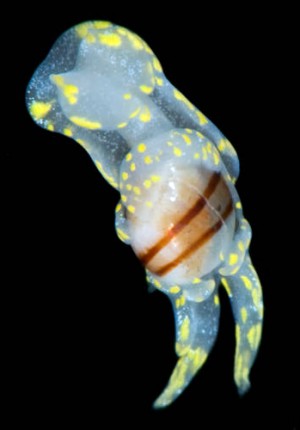
Dear Bill
As you requested, here are some photos of Noalda exigua from our website http://www.bluering.org.au
It was found at Anderson Point, Portland in western Victoria, Australia. 23 February 2007. Photos: Leon Altoff
I hope the photos are of value.
Leon Altoff
leon@bluering.org.au
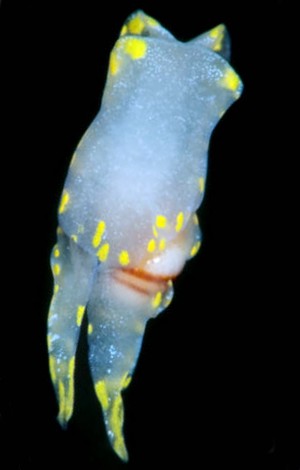
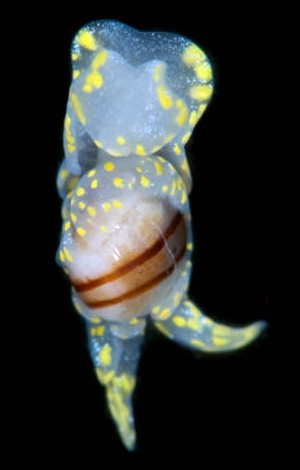
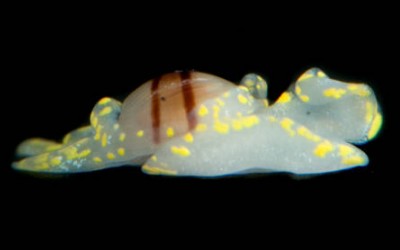
Dear Leon,
Thanks for your rapid response. Apart from Bob Burn's sketches of a living animal in Burn & Thompson, 1998, your photos are the only information I have on the nature of the animal of this enigmatic species, which was described on the basis of an empty shell.
I am posting a message today [#23242] on a very similarly looking species from the Andaman Sea. It's colour is very similar but the shell is not as exposed as in N. exigua and the head looks a little different in shape. Perhaps they are the same, but without any anatomical information I think it is best to leave them apart until we can comare them anatomically.
- Burn, R. & Thompson, T.E. (1998). Order Cephalaspidea. Mollusca: The Southern Synthesis. Fauna of Australia. P. L. Beesley, G. J. B. Ross and A. Wells. Melbourne, CSIRO Publishing. 5, Part B.: 943-959.
Best wishes,
Bill Rudman
